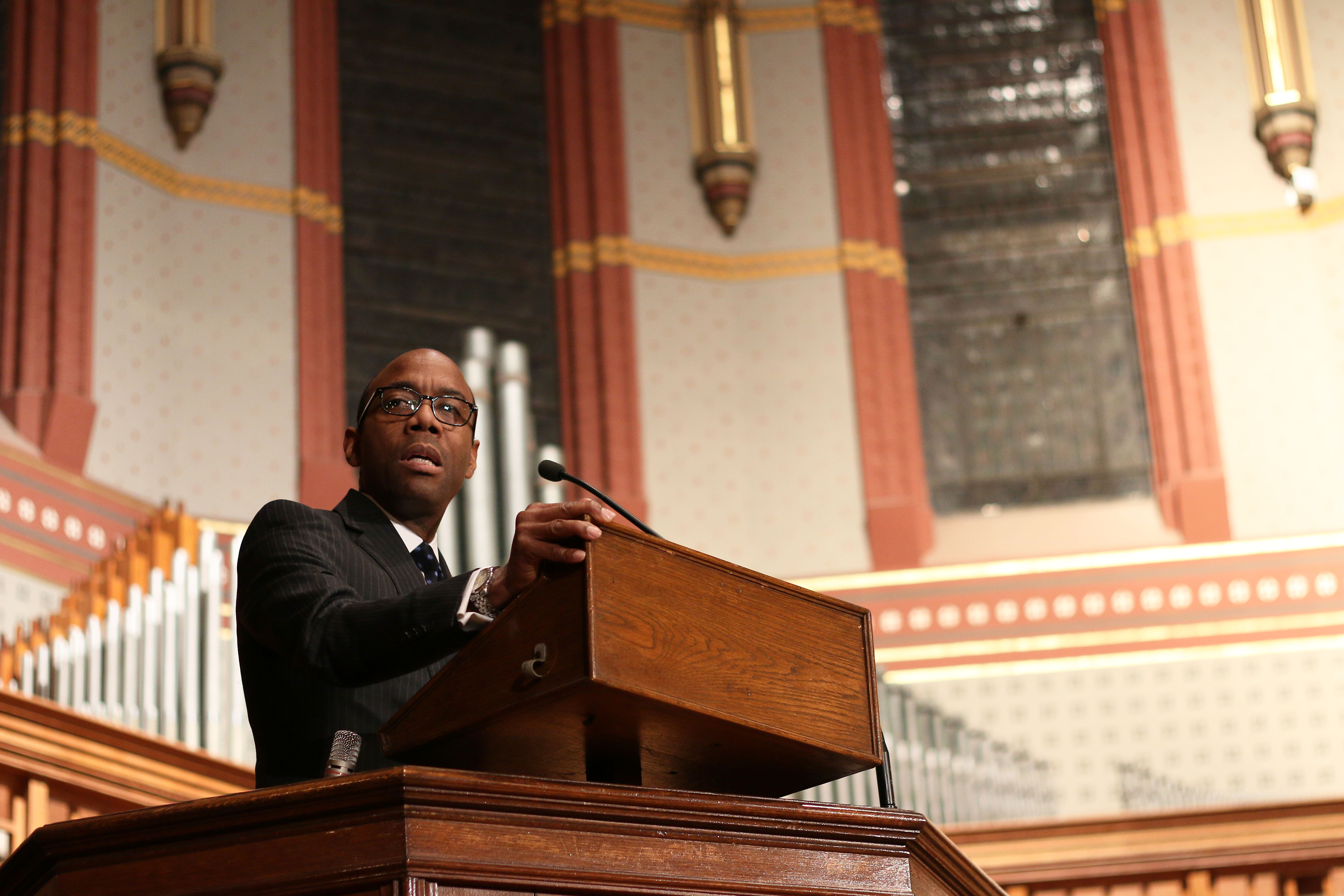
Standing at the same pulpit where Martin Luther King Jr. spoke in 1962, Rev. Cornell William Brooks LAW ’90, the president and CEO of the NAACP, delivered the keynote address for Yale’s annual celebration of King’s life and legacy on Wednesday in Battell Chapel.
With soaring, impassioned rhetoric that echoed King himself, Brooks encouraged students, faculty members, administrators, NAACP representatives and local residents — an audience that filled the first floor of the chapel — to stand up against injustice and fight racial discrimination. Brooks reminded his audience of the immediacy of King’s words, especially at Yale, where discussions and demonstrations about racial issues garnered national attention last fall.
“On this evening hearing these words within our hearts, ‘I have a dream,’ gives golden wings to our moral imagination, even at this moment, when the proposition ‘Black Lives Matter’ is questioned and doubted,” Brooks said.
Brooks focused on King’s “prophetic voice and vision” and called upon his audience to continue King’s work. Brooks said that because of the intensity of Yale’s recent student activism, he was inspired to come to campus, show his own support and relay King’s messages.
Brooks became president of the NAACP in 2014 after serving as the president and CEO of the Newark-based New Jersey Institute for Social Justice, an urban research and advocacy nonprofit. In that capacity, he oversaw the passage of three prisoner re-entry bills and spearheaded urban economic renewal programs. Brooks unsuccessfully ran as a Democratic nominee for Congress in Virginia in 1998.
“He served the people,” Yale College Dean Jonathan Holloway said of Brooks in his opening remarks. “He laid the foundation so that others could rebuild their lives as productive and responsible citizens. In all of this work, he served as a model for the kind of sacrifice and vision that we associate with Martin Luther King Jr.”
In his address, Brooks spoke of the importance of rising to the challenge of social activism, even in the face of self-doubt or external obstacles. Speaking about a march he organized from Selma, Alabama to Washington, D.C. last year, Brooks said the marchers did not have the resources they needed, such as money or sufficient police protection. However, the marchers were “flawed but called by God” to take a stand, he said.
Brooks spoke about the generational divide between social-justice activists, arguing that organizations such as the NAACP and the Black Lives Matter movement must learn from each other and unite to solve issues like racial discrimination and voter disenfranchisement.
For Brooks, the future of racial-justice movements involves supporters of all ages.
“The victims of racial profiling are multigenerational, and the opponents of racial profiling must be multigenerational. We need everyone in this fight. And unless we stand together, we will fall and fail together,” he said.
Abby Johnson ’16 said that while some young people may think that they are “just students,” they should not be afraid of confronting injustice as activists.
Former President of the Greater Hartford Branch of the NAACP Barbara Wiggins, who attended Brooks’ talk, told the News that younger activists can learn from older ones and vice versa, a message Brooks emphasized.
“We must work together to straighten our neighborhoods,” Wiggins said.
Andrew Albin, a visiting fellow at the Yale Institute of Sacred Music, said he was inspired by Brooks’ description of King’s “prophetic voice” and Brooks’ suggestion that activists can be mouthpieces for something larger than themselves.
Brooks argued that many of the most important social-justice organizations in American history — from the Student Nonviolent Coordinating Committee to Black Lives Matter — have been viewed as “young, radical and edgy.” But, he said such energy and vigor is crucial for profound action.
“There are prophets among us, walking across campus,” Brooks said.
At Yale, Brooks edited the Yale Law Journal and was a member of the Yale Law and Policy Review.







